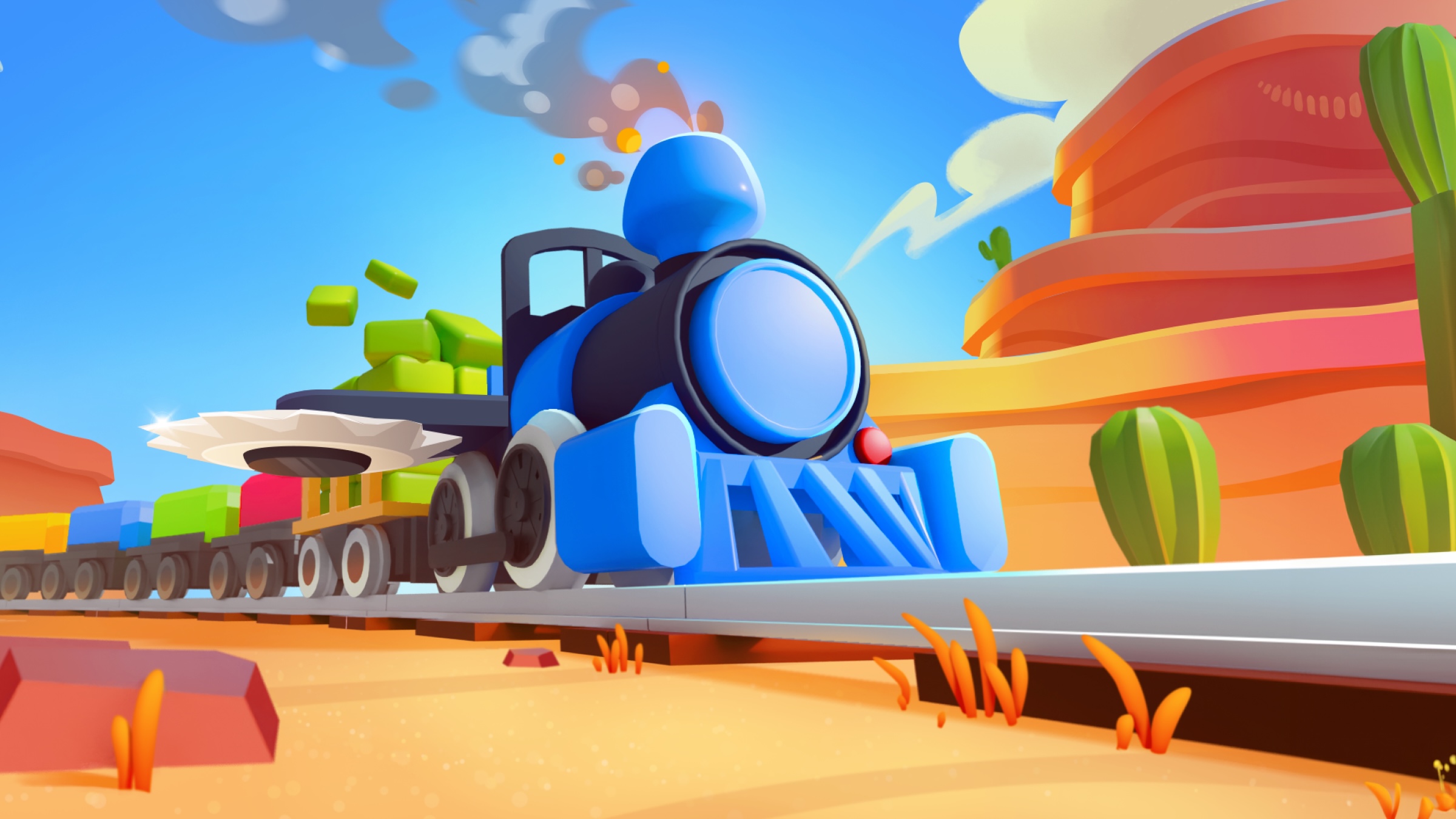How the studio’s expertise in look & feel helped create a successful hyper-casual game
At first, the game showed average metrics upon release, but instead of drastically changing the gameplay, we spent six months refining the look and feel. Without Flexus Studio’s mastery of animations, effects, and feedback, this project wouldn’t have succeeded.
The end result was a unique game (before competitors appeared) that now generates hundreds of thousands of dollars monthly and has great scaling potential. Replicating this success by relying on a single mechanic would be extremely challenging. Here’s a brief overview of what we focused on during development.
Nice prototype, but not the best metrics
Our long-standing collaboration with Flexus has always revolved around their strong visual design, rich animations and VFX. This kind of expertise is difficult to master quickly.
Ever since the time they first brought us the prototype of Train Miner, the project’s development focused heavily on the look and feel, encompassing object physics, the visual, and other atmospheric effects.
Given our beliefs in the importance of visual polish, even for a hyper-casual game, we decided to develop this project together right away.
The game launched in early 2024, but its initial metrics were unimpressive. Day-one retention was at 36%, which, in such a competitive market, wasn’t enough. The game needed more content, better balance, and refined core gameplay.
The thing is, polishing mechanics for a game with such detailed physics and effects takes more time and effort than it usually does. And while it might extend the development cycle, it also raises the difficulty for hyper-casual competitors lacking this level of expertise.
Enhancing the game’s feel
Given the complexity of the look & feel and the limitations that come with it, we initially focused on refining the game’s core controls, without altering the gameplay too drastically. We tested various swipe and tap controls, working on screen transitions and animations, particularly the train’s movement and stopping. The best results came when the train’s movement mimicked pressing the gas pedal by holding your finger anywhere on the screen.
We refined object physics, such as the difference in feel between a loaded and an empty train. We also adjusted how trees, stones, and other resources reacted to saw contact. Sound effects received special attention from us—they’re affected even by changes in train speed, tying it all together.
A significant change was how rails rebuilt themselves as the island was cleared. Instead of expanding evenly in a square when new cells are unlocked, the studio worked really hard to make it look like this:
The option to merge wagons to create a higher-level one was there from the beginning, but calculating damage for various resource types, wagons, and angles took a lot of time.
As the road expanded at different angles, resource cells were affected from various sides, making the road expansion uneven and visually appealing. This change drastically enhanced the feel of the game for the better.
In fact, the wagon-merging update later resulted in the most significant one-time boost in metrics.
At the same time, we kept enhancing the visuals. We added saw-to-resource contact effects and pop-ups for new wagon types, along with other aesthetic details.

In the first six months post-release, we were fine-tuning a hyper-casual project. But during that period, Train Miner evolved beyond its initial genre, blending elements of idle, transport tycoon, and even simulation games.
We never set out to create a pure hyper-casual game. Instead, we focused on compelling gameplay and visuals, even though this approach presented some limitations or, more accurately, challenges.
How we improved retention
We added new content to ensure long-term retention. At launch, the game had only five islands, but today it has nearly two dozen. By the time this overview comes out, there might be even more.
Multiple iterations of balance adjustments that were happening at the same time also improved early-game metrics. We experimented with resource distribution on a level (wood, stone, gold, etc.), making the first levels more dynamic and increasing difficulty for the ones that come later in the game. This led to a significant increase in retention, which typically decreases over time.
- R1 at release: 36%
- R2 after 8 months: around 43%
By the summer of 2024, Train Miner became a steady revenue earner, generating nearly $2 million in six months, with $500,000 from in-app purchases.
Final thoughts
In the near future, we expect major updates, including new placements, resource upgrades, and promotions, as the game has enormous potential for scaling.
While the idea may seem straightforward, the game’s emphasis on sensations, visuals, and progression has made it truly unique. Replicating its success without deep expertise in look & feel would be nearly impossible.
